Guadalupe Araoz travels the world by motorcycle. Riding solo on her Honda XR125L she has toured Latin America and North America (you can read about those rides here on her website) and now faces her biggest challenge: riding through Africa on a Honda 250 with a budget of 300 dollars a month and without a *Carnet du Passage. She promises to avoid crowded roads, to visit the wildest terrain that Africa has to offer, and camp as much as possible. Can she do it?*
The first step for the trip to Africa was to buy a motorcycle in Spain. I bought a one-thousand euros Honda NX250 (Dominator) in San Sebastian. The bike only had 11.000 kilometers on its odometer.
I arrived in San Sebastian with a strange feeling in my gut; I didn’t know whether it was fear or anxiety to begin the journey. It's been six months since I left my previous bike in Mexico, after riding the Americas. Even longer since I used any tools. I couldn’t stop wondering if I will manage myself during the trip. I always say that I know little of mechanics and that sincerity is what allows me to ask questions until I settle my doubts. Fortunately, mechanics and the grease that accumulates under the nails after cleaning the chain do not understand about genres.
Bingen, a Basque friend of one of my sponsors, offered to help and teach me the basic mechanics for the bike. Africa is a greater challenge than Latin America, so I decided to prepare myself better in order to require the least amount of help possible along the way, even though a problem often leads to a good story.
Bingen built 22mm steel crash bars, panniers rack and a protector for the crankcase. The custom-made crash bars are set high to protect the engine and the radiator. We also put two LED auxiliary lights, a 12-volt socket, aluminum hand guards, and a tail rack for an extra bag. We changed the air and oil filters, battery, front brake pads, tires, and fork oil. Bingen swapped the monoshock for another one from a Suzuki Gladius SFV 650, which would better support the additional weight off-road. In addition, Rubén, a friend of his, painted the fairing.
The NX250 is a carbureted motorcycle with liquid cooling. Liquid cooling was something new to me. Although its operation is simple and has a better regulation of temperature than an air-cooled bike, it is also more fragile. On a path with shrubs, a branch could potentially puncture the radiator. For this reason, we decided to mount a metal guard in front of it for protection. I will also carry a radiator sealer in my toolbox.
I asked Bingen what I should do if the bike falls into a river (one of my biggest fears!). He recommended that, first, I should turn it off with the emergency switch; recover it from the river, remove the spark plug and press the starter to crank the engine. If water runs out through the spark plug hole, I must continue cranking it until it drains. If no more water comes out, then I should replace the spark plug and check the oil. If there is water in the oil, it must be changed. Once the engine and the oil are without water, it can be safely started.
I still can’t change the back tire without help but I don’t worry too much about it because I use Slime, a product that more than once has saved me from puncturing the tires and tubes. After changing the tires, we finished the mechanics course and we started the weekend. First stop: Parque Natural de las Peñas de Aya. I missed the smell of green and the sound of the wind.










/cloudfront-us-east-1.images.arcpublishing.com/octane/SGAPSPPJL2MVSYFWR3L7UG7OYI.jpg)

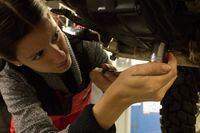
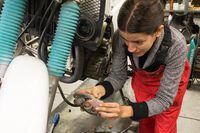
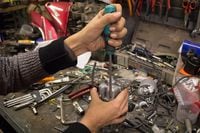


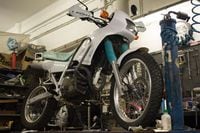

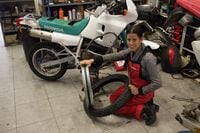
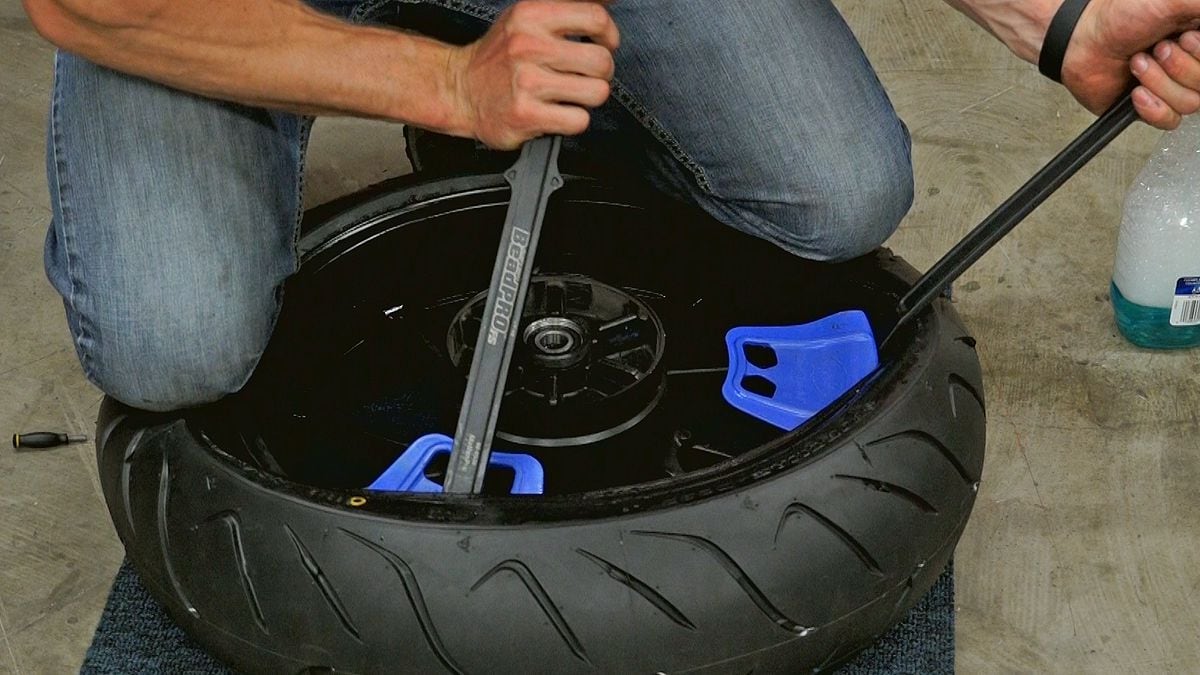

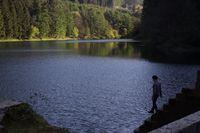

/cloudfront-us-east-1.images.arcpublishing.com/octane/VZZXJQ6U3FESFPZCBVXKFSUG4A.jpg)
/cloudfront-us-east-1.images.arcpublishing.com/octane/QCZEPHQAMRHZPLHTDJBIJVWL3M.jpg)
/cloudfront-us-east-1.images.arcpublishing.com/octane/HXOUJXQWA5HBHGRO3EMJIGFMVI.jpg)

/cloudfront-us-east-1.images.arcpublishing.com/octane/3TIWWRV4JBBOLDVGRYECVVTA7Y.jpg)
/cloudfront-us-east-1.images.arcpublishing.com/octane/KIX5O23D5NAIBGFXBN3327DKZU.jpg)
/cloudfront-us-east-1.images.arcpublishing.com/octane/7GJYDUIPXRGMTMQKN6ONYOLBOU.jpg)
/cloudfront-us-east-1.images.arcpublishing.com/octane/MUQLOVLL2ZDGFH25ILABNBXKTI.jpg)
/cloudfront-us-east-1.images.arcpublishing.com/octane/TNOU5DNE2BC57MFPMGN2EIDXAM.jpg)
/cloudfront-us-east-1.images.arcpublishing.com/octane/GTCXACQGJ5HAPDTGWUQKDEH44E.jpg)
/cloudfront-us-east-1.images.arcpublishing.com/octane/S35YGSEMEZB4BLTDJTSZPF4GLA.jpg)
/cloudfront-us-east-1.images.arcpublishing.com/octane/5UOT6HPX2JFMRJAX6EH45AR4MQ.jpg)
/cloudfront-us-east-1.images.arcpublishing.com/octane/OKWOJWAKP5EP3OACCRRWPCIX2Q.jpg)
/cloudfront-us-east-1.images.arcpublishing.com/octane/2WF3SCE3NFBQXLDNJM7KMXA45E.jpg)
/cloudfront-us-east-1.images.arcpublishing.com/octane/G4MG6OUCJNBSHIS2MVVOTPX65E.jpg)
/cloudfront-us-east-1.images.arcpublishing.com/octane/IIGGWFOTOJGB7DB6DGBXCCMTDY.jpg)
/cloudfront-us-east-1.images.arcpublishing.com/octane/QSTCM6AVEZA5JJBUXNIQ3DSOF4.jpg)
/cloudfront-us-east-1.images.arcpublishing.com/octane/U4I7G625B5DMLF2DVIJDFZVV6M.jpg)
/cloudfront-us-east-1.images.arcpublishing.com/octane/B6XD6LS6IVCQPIU6HXDJSM3FHY.jpg)
/cloudfront-us-east-1.images.arcpublishing.com/octane/ICL63FEDDRDTTMINYICCEYGMDA.jpg)
/cloudfront-us-east-1.images.arcpublishing.com/octane/FCGZHQXRBZFLBAPC5SDIQLVF4I.jpg)
/cloudfront-us-east-1.images.arcpublishing.com/octane/WNOB6LDOIFFHJKPSVIWDYUGOPM.jpg)

/cloudfront-us-east-1.images.arcpublishing.com/octane/X33NU3E525ECRHXLNUJN2FTRKI.jpg)